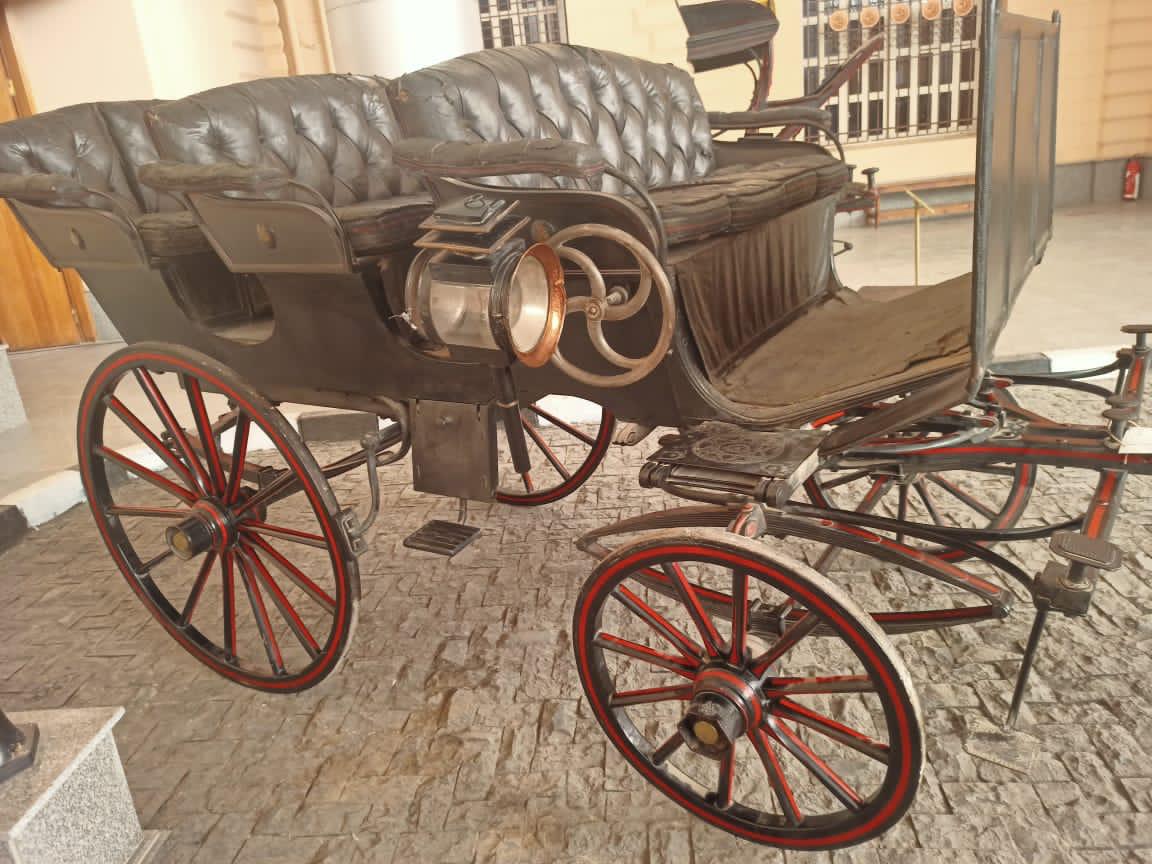CAIRO – 10 December 2020: On December 10, the Royal Chariots Museum in Bulaq received a cabriolet dating back to the era of Khedive Abbas Helmy II.
It was previously located in Al-Qaseer Castle in the Red Sea as a warrant for Case No. 1949 of 2008, after it was seized in an attempt to smuggle it out of the country from the port of Safaga.
This was stated by Moamen Othman, head of the museums sector at the Supreme Council of Antiquities, explaining that upon the issuance of the Public Prosecution's decision from the Safaga Port Police Department, to hand over the vehicle (cart) to the Supreme Council of Antiquities during the past few weeks, the archaeologist and restorer of the Supreme Council of Antiquities immediately took all necessary legal measures to receive the vehicle, and record it among the archaeological holdings prior to transferring it to the Royal Chariots Museum in Bulaq, to be restored and displayed.
Othman confirmed that a detailed report was made on the accurate condition of the vehicle. The restoration team carried out the documentation and initial restoration work, and that the process of packaging and transportation was carried out at the highest level of efficiency and in accordance with the scientific and technical standards used for packaging and transporting antiquities.
He pointed out that during the coming period, a team of restorers will work at the Royal Chariots Museum to document and prepare a plan for its restoration in preparation for displaying it in the changing exhibition hall.
Ahmed Al-Sabbagh, director general of the Royal Chariots Museum, indicated that the vehicle was of the type of Ay and dates back to the era of Khedive Abbas Helmy II, specifically in 1892.
It is 3.5 meters long and 1.5 meters wide and is carried on four wood and leather wheels and consists of a brass and wood cabin clad with leather.
It has two side doors with two seats facing each other, and the cabin provides a seat for the driver, and behind the cabin a chair for guards. On the four sides of the cabin there are four copper lanterns for lighting and a copper bell.
Sabbagh said that the museum's restorers also restored the unique black-colored Sharapan with a red mastic, placing it within the museum’s display in the museum's Celebration Hall, stressing that this carriage does not resemble the cars displayed in the museum. It is an open carriage dating back to the era of the Khedive Ismail, when it was used on trips.

The most important thing that distinguishes it is that it has three seats in a row using the entire width of the cart.
Comments
Leave a Comment